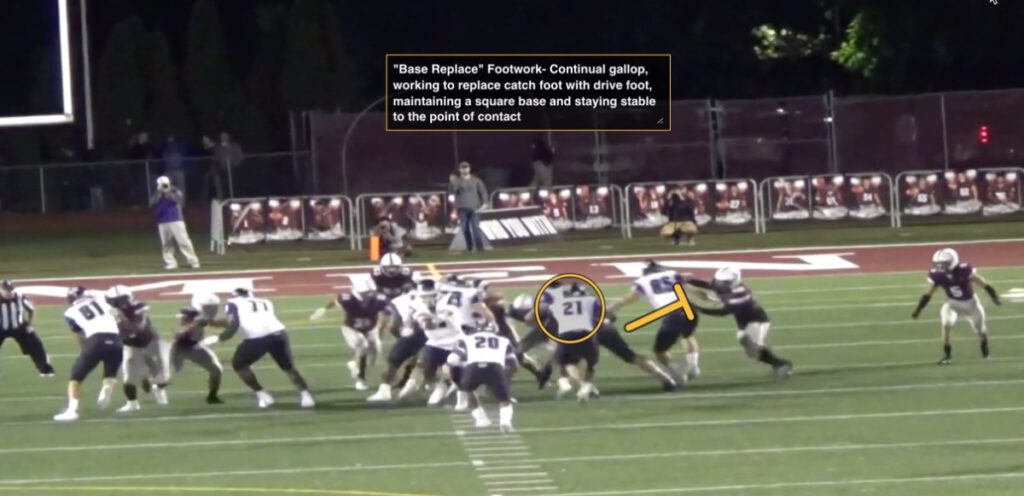By Danny Schaechter
Offensive Coordinator/Quarterback’s Coach
Gonzaga College High School (DC)
Twitter: @CoachDShack
I love fullbacks. They’re the offensive line’s bash brother. They can add so much to an offense yet get little notoriety for their contributions, and they get the ball even less. What fullbacks get the least of is technique. This was one of my frustrations that came to a boil after our 2018 WCAC Championship. We were moving our sophomore fullback to defense. His replacement was a third-string linebacker who was smaller than our departing fullback, but he was one of the hardest workers on the team. We had to find a way to give this undersized, converted linebacker a chance to block defensive football players who were going to be much bigger and more athletic.
Like many other coaches, when it came to fullback, we had coaching points: contact near foot, near shoulder, and explode low to high. We'd been giving those fundamental points to our fullbacks for years, and it had been fairly successful, but there were still issues with fullbacks on our kick-out blocks lunging and whiffing, being driven back into the play, and/or playing too high. This is because coaching points are not the same as technique. After asking a lot of college coaches, including Power 5 coaches who were known for physical fullback play, this was the common answer: we just find someone who can do it. Many high school coaches don't have that option. Through the search for an actual technique to a kick-out block, our staff had an idea that stole from the biggest fullbacks on the team, the offensive line. For us, this was the birth of the fullback gallop technique for kick-out blocks.

The Gallop
Once again, this technique is borrowed from the offensive line’s gallop technique used by the drive man on double teams.








